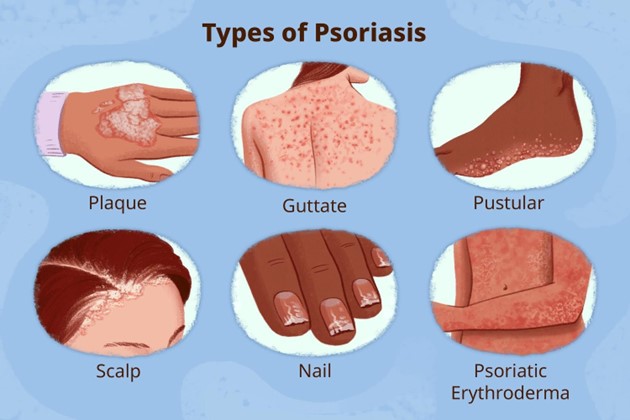A nurse in a provider's office is collecting data from a client who has psoriasis.
Which of the following statements by the client should the nurse report to the provider?
I limit my time spent out in the sunlight
I do not use fabric softener when I wash my clothing.
I try not to look at the scales on my body.
I remove old medication on my skin before applying a new dose.
None
None
The Correct Answer is A
A. Sunlight exposure can actually be beneficial for clients with psoriasis, as ultraviolet (UV) light can help reduce the growth of skin cells and alleviate symptoms. If the client is limiting their sunlight exposure, they might be missing out on a potential therapeutic benefit. However, it is important to balance sun exposure and avoid overexposure to prevent skin damage.
B. Avoiding fabric softener can be a proactive measure to prevent skin irritation, which is beneficial for someone with psoriasis.
C. This could indicate emotional distress or body image concerns, but it doesn’t necessarily need to be reported unless the client shows signs of depression or anxiety affecting their daily life.
D. This is correct practice to ensure the effectiveness of the medication.

Nursing Test Bank
Naxlex Comprehensive Predictor Exams
Related Questions
Correct Answer is ["A","C","D"]
Explanation
Correct answers: A, C, D
A. Provide a stimulating environment for the client. A structured and stimulating environment can help maintain cognitive function and reduce restlessness or agitation. Activities such as music therapy, puzzles, or light exercise can be beneficial.
C. Limit the number of choices for the client. Too many choices can be overwhelming for a client with Alzheimer's disease, leading to frustration and anxiety. Providing limited and simple choices helps them feel more in control without confusion.
D. Use written signs to assist the client with locating the bathroom. Clients with Alzheimer's may have difficulty recognizing familiar places. Labeling key areas, such as the bathroom or bedroom, with clear written signs or pictures can help them navigate their environment independently.
Incorrect:
B. Use confrontation to manage the client's behavior. Confrontation can lead to increased agitation, anxiety, or aggression in clients with Alzheimer's. Instead, caregivers should use redirection, reassurance, and validation therapy to manage behaviors.
Correct Answer is D
Explanation
Ensure that the client has given informed consent.
Obtaining informed consent is a critical step before any medical procedure. It ensures that the client understands the nature of the procedure, its risks, benefits, and alternatives, and voluntarily consents to it. It is essential to ensure that the client has given their informed consent before proceeding with the EGD.
The other options do not directly pertain to the EGD procedure:
- Administering an oral contrast solution is typically not part of the preparation for an EGD.
- Informing the client about the duration of the procedure is important for the client's understanding, but it is not the primary action for the nurse to take.
- Ensuring that the client's bladder is full is not a standard preparation for an EGD.
Whether you are a student looking to ace your exams or a practicing nurse seeking to enhance your expertise , our nursing education contents will empower you with the confidence and competence to make a difference in the lives of patients and become a respected leader in the healthcare field.
Visit Naxlex, invest in your future and unlock endless possibilities with our unparalleled nursing education contents today
Report Wrong Answer on the Current Question
Do you disagree with the answer? If yes, what is your expected answer? Explain.
Kindly be descriptive with the issue you are facing.
